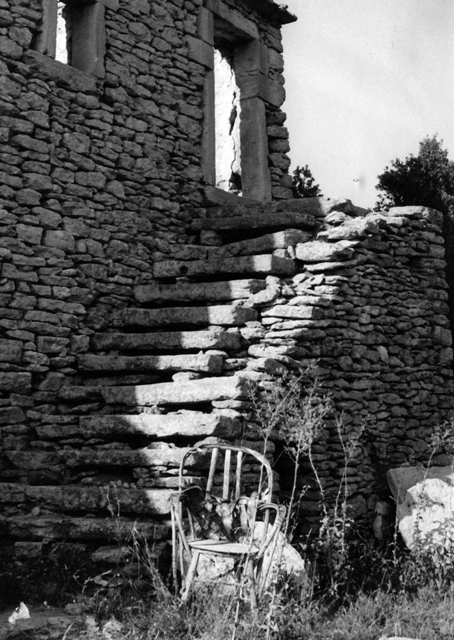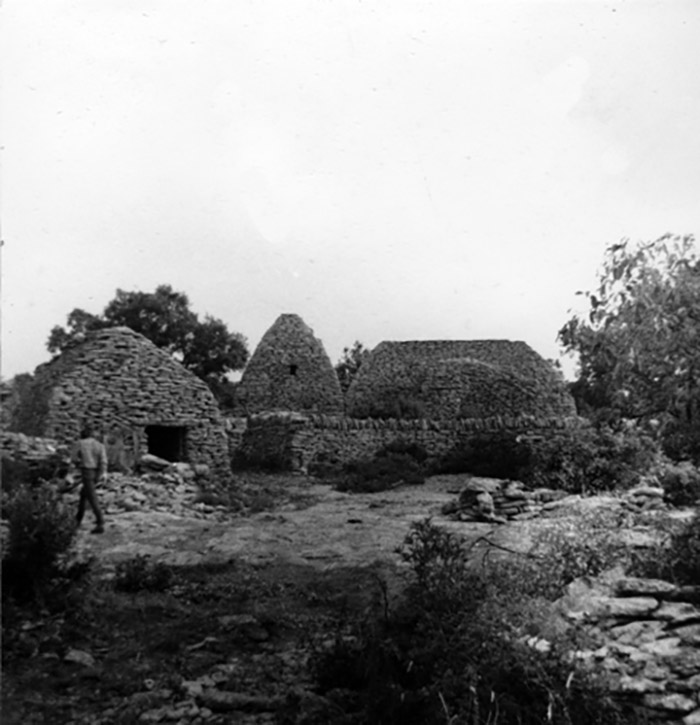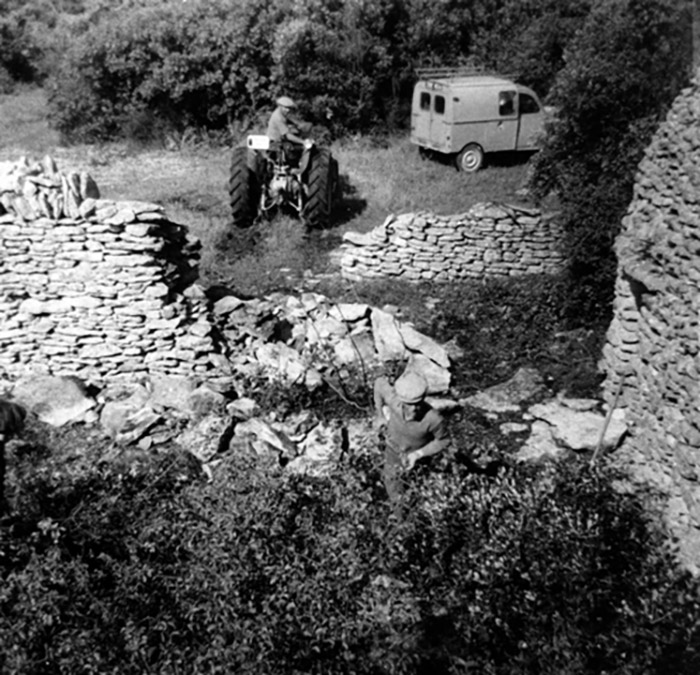Restoration of the Village des Bories
restoration
Understanding the restoration of the Village des Bories
His passion for old stones and the history of Gordes, his attachment to this unique and remarkable site, and respect for the hard work and know-how of our elders were the driving force behind Pierre Viala's rescue that enabled us to reclaim our heritage.
Today, it is one of the most visited sites in Vaucluse.
The following text allows visitors to the Village des Bories to understand the different stages of the Village’s restoration through the story of Pierre Viala, the Village’s original owner and passionate restorer.
« While today, the Village des Bories can be seen in its well balanced architectural setting, at the time of its restoration, it was impossible to get an idea of its layout, as the bories and walls disappeared under the clutter of invading ground cover. The dead mulberry and almond trees, interspersed with the oaks and sprawling junipers that had suffocated them, together with the olive trees frozen in 1956, formed such an entanglement that it was impossible to reach the huts whose rooftops could only be seen in disarray.
It was necessary to clear the brush step by step in order to move freely and discover the overall layout; remove the dead trees and those which had taken root in the walls and under the bories, lifting them up and causing breaches. There were also breaches due to the fact that certain hunters of the rich pre-myxomatosis hunting period did not hesitate to demolish a wall to hunt down a rabbit hiding between the stones. In 1886 and 1909 two earthquakes shook the site. They should probably be blamed for the broken lintels, cracks and collapsed structures.

The structures’ collapse and the results can still be attributed to time, plant growth and the nature of the soil, and to all these factors combined if we observe that many of the bories were built without a foundation on the first layer of soft rock that appears as foliated limestone plates.
Between the surface layers there are roots that, as they grow, lift up the stones or create voids when they dry and decompose, causing landslides.

The restoration began in 1969 and took place over eight years. It required thousands of hours of work and the transportation of a considerable volume of stones. Although the ground was already strewn with stones from damaged walls and torn and dishevelled bories, there was a lack of them, especially for ridge tiles used for roofs. They had to be gleaned from the surrounding land, taking care not to degrade one place so as to repair another. The stones were selected according to their patina and their nature in order to ensure the connection in terms of material and colour with those they were to restore.
Open areas, courtyards and alleys were cleared of small gravel, soil, roots and debris of all kinds that had accumulated there. All the walls separating the terraces were re-built, and often from their base. All the roof ridges were restored. Here a corner had to be rebuilt, there was a door frame that needed repair, a lintel to replace. There were a lot of bories with huge gaps threatening to collapse.
The central bread oven seemed to spew both the earth which had ensured its insulation, and the roots of a tree which, having grown in its centre, had burst its dome. Without a roof and with fallen archways, the small 17th century house with its rigorous proportions and northern blind wall of superb construction, risked collapsing. Its restoration was especially delicate because of the fragility of its facade, cracked from top to bottom, whose sober and rustic layout could not be modified or altered in any way.
Finally, to complete the rebirth of the village and return it to its natural setting, the olive groves were re-cultivated.
We know of bories with more imposing dimensions, others that are more ancient, but here the harmonious distribution of vertical and horizontal structures, the play of light of the rising and setting sun, the balance between plants and rocks, all contribute to the original charm of a privileged site that we believed essential to put back together and restore in order to preserve a rare example of spontaneous architecture, fortunately integrated into nature by the use of raw materials in an economy of means and shapes.

The Village des Bories, organized as a museum of rural life, displays archival documents evoking the Gordes of yesteryear. It houses a collection of traditional everyday objects from the region and agricultural tools of the past made by hand and for the hand of man. Finally, an exhibition assembling photographs of different types of dry-stone constructions spread throughout France and throughout the world contributes to a better knowledge of this form of architecture, so well represented in Haute-Provence. »



